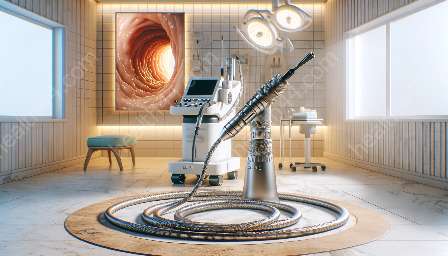When it comes to medical devices and equipment, bronchoscopes play a crucial role in pulmonary medicine. These instruments are closely related to endoscopes, sharing similar functions and serving as integral tools for diagnosing and treating respiratory conditions. Here, we'll delve into the world of bronchoscopes, exploring their features, compatibility with endoscopes, and their significance in modern healthcare.
Bronchoscopes: An Overview
Before we delve into the specifics, let's establish a clear understanding of bronchoscopes and their functions. A bronchoscope is a medical device used to visualize the airway and diagnose respiratory conditions. It consists of a flexible or rigid tube with a light and camera at one end, allowing healthcare professionals to obtain clear images of the bronchial passages and lungs.
There are two main types of bronchoscopes: flexible and rigid. Flexible bronchoscopes are maneuverable and can navigate the intricate airways with ease, making them suitable for both diagnostic and therapeutic interventions. On the other hand, rigid bronchoscopes, though less flexible, are preferred for certain procedures that require a sturdier instrument.
Compatibility with Endoscopes
Endoscopes and bronchoscopes share similarities in terms of their design and functions. Both devices utilize advanced optics and lighting systems to provide clear and detailed images of internal organs and cavities. While endoscopes are primarily used to examine the gastrointestinal tract and other internal organs, bronchoscopes are specifically designed for visualizing the airways and lungs.
It's important to note that advancements in technology have led to the development of bronchoscopes with enhanced compatibility with endoscopic systems. This compatibility allows for seamless integration of bronchoscopy findings with other endoscopic examinations, facilitating comprehensive assessments of a patient's overall health.
Role in Pulmonary Medicine
Bronchoscopes play a pivotal role in pulmonary medicine, enabling physicians to diagnose and treat a wide range of respiratory conditions. From identifying tumors and infections to obtaining biopsy samples, these devices offer remarkable versatility in managing pulmonary disorders. Moreover, bronchoscopes are integral to procedures such as bronchoalveolar lavage, foreign body removal, and managing airway obstructions.
Additionally, bronchoscopes are essential tools in the field of interventional pulmonology, where minimally invasive techniques are employed to address complex pulmonary conditions. The ability to perform therapeutic interventions, such as stent placement and laser therapy, further underscores the significance of bronchoscopes in modern healthcare.
Advancements in Bronchoscopy Technology
The field of bronchoscopy has witnessed significant technological advancements, leading to the development of more sophisticated and efficient bronchoscopes. These innovations have paved the way for enhanced image quality, better maneuverability, and improved patient comfort during bronchoscopic procedures.
One notable advancement is the integration of video bronchoscopes, which provide real-time video imaging of the airways, allowing for detailed examination and precise guidance during diagnostic and therapeutic procedures. Furthermore, the introduction of miniature, high-definition cameras has revolutionized bronchoscopy, offering enhanced visualization and accurate assessment of pulmonary abnormalities.
Importance in Medical Devices & Equipment
Within the realm of medical devices and equipment, bronchoscopes hold a significant position due to their indispensable role in diagnosing and treating respiratory ailments. As healthcare providers strive for precision and efficiency in patient care, bronchoscopes contribute to achieving these goals by offering high-definition imaging, precise maneuverability, and adaptability to evolving medical practices.
When considering the broader landscape of medical devices and equipment, the seamless integration of bronchoscopes with other endoscopic systems underscores their importance in delivering comprehensive healthcare solutions. This integration enables multidisciplinary approaches to patient care, facilitating coordinated assessments and treatment plans across various medical specialties.
Conclusion
In conclusion, bronchoscopes stand as vital instruments in the field of pulmonary medicine, complementing the functionalities of endoscopes and contributing to the advancement of medical devices and equipment. Their compatibility with endoscopic systems, along with their role in diagnosing and treating respiratory conditions, exemplifies their significance in modern healthcare. As technology continues to drive innovation in bronchoscopy, these devices are poised to play an even greater role in shaping the future of respiratory medicine.


